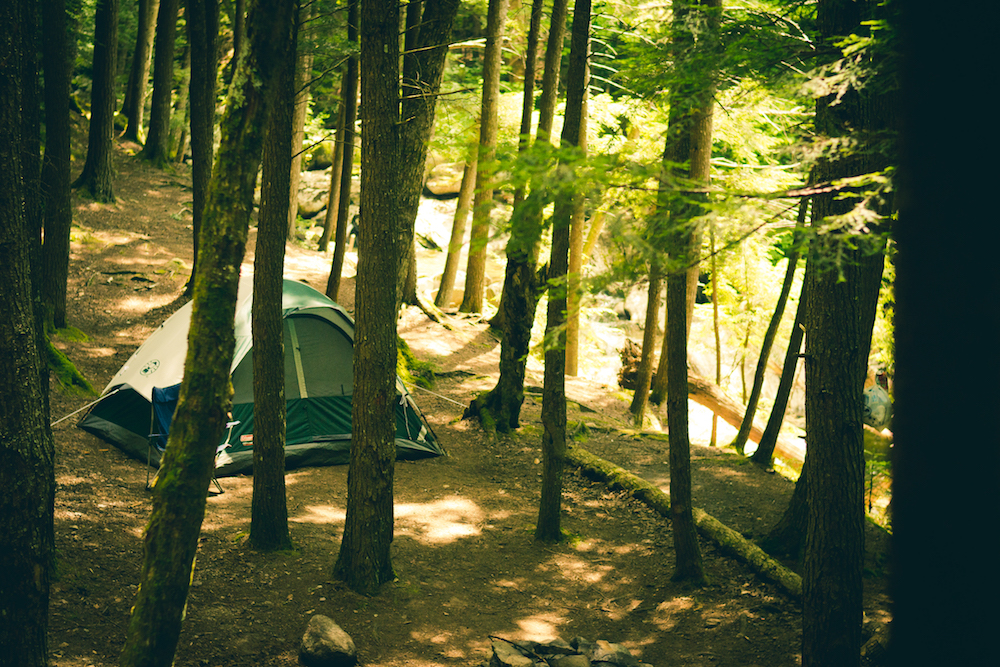How to Avoid Wicked Wildlife That Can Put You At Risk
Advertisement
1. Deer Tick
Officially known as the black-legged tick, its bite can transmit Lyme disease, a bacterial infection causing fever, headache and fatigue. The infection can spread to joints, the heart and central nervous system, causing serious, chronic complications.
Avoid by:
- Wearing a hat, long sleeves and long pants tucked into your boots, and applying insect repellent with DEET.
- After bushwhacking, check your entire body for ticks or the telltale bull’s eye rash from a bit.
- Remove an embedded tick whole with pointy tweezers: grip it by the head as close to your skin as possible and slowly pull it straight up. Keep the tick for testing and see a doctor, as Lyme disease symptoms may not show up for months.
2. Broad Fish Tapeworm
The largest human-hosted tapeworm, Diphyllobothrium latum enters the digestive system via raw or undercooked fish. Present in the Great Lakes region, central Canada and Pacific northwest, it’s most commonly found in salmon, as well as in whitefish, trout, pike and walleye. Symptoms include abdominal discomfort, diarrhea, vomiting and weight loss, although hosts can be asymptomatic for years.
Advertisement
Avoid by:
- Not snacking directly out of the livewell.
- Thoroughly cooking your catch, or freezing it at -10°C for 24 to 48 hours.
3. Giardia lamblia
This microscopic protozoan parasite causes giardiasis, an intestinal infection commonly known as beaver fever. Contracted from water or surfaces contaminated by an infected animal or human feces, the illness causes nausea, diarrhea and stomach cramps, which can lead to dangerously rapid dehydration.
Avoid by:
- Never ingesting untreated water.
- Avoiding close contact with someone who’s infected.
4. Trichinella
Found in wild game, especially bears and boars, this parasitic roundworm causes trichinosis. Symptoms start with nausea, vomiting and intestinal discomfort, quickly progressing to headaches, fever, chills, and joint and muscle pain. Severe cases can lead to mobility disorders, and even heart and breathing problems.
Avoid by:
- Cooking wild game meat thoroughly, and carefully cleaning meat grinders and other tools after use.
- Knowing that freezing, curing, drying, smoking or microwaving meat does not consistently kill the organism.
5. Ungulates
During rutting season, normally reclusive bull moose and elk transform into giant, hormone-crazed aggressors. They become highly unpredictable and may charge with little warning; injuries from goring, stomping and kicking can result.
Advertisement
Avoid by:
- Giving the animal space—at least 25 yards.
- If its ears lay back, it may charge; the same goes if the hairs on a moose’s hump rise. In either case, run—the animal won’t chase you for very far—and get behind something solid.
6. Cougars
Cougar attacks have increased markedly since the 1970s owing to rebounding populations and human encroachment on cougar habitat. Attacks are most prevalent in late spring and summer, as hungry, inexperienced juveniles search for new territory. Cougars kill their prey by leaping on it and biting the neck, causing fatal head and spinal injuries.
Avoid by:
- Travelling in groups, making noise and keeping children and pets close.
- If attacked, be aggressive—wave your arms, shout or throw rocks.
7. Blastomyces dermatitidis
Okay, it’s not a critter as such, but this spore can cause blastomycosis, a fungal lung infection, if inhaled. The spores thrive in moist, acidic woodland soil, particularly in northwestern Ontario, as well as in Manitoba, Saskatchewan and Quebec. Flu-like symptoms give way to sharp chest pain, and widespread skin, bone and pulmonary infections; blasto is easily mistaken for pneumonia, tuberculosis or even lung cancer.
Avoid by:
Covering up and wearing an N95 (particle respirator) mask when digging damp earth or rotting vegetation in affected regions.
8. Mosquitoes
Aside from the itchy bite, these pesky insects can transmit West Nile virus. The symptoms include fever, headache, body ache, nausea and vomiting. Roughly one out of every 150 infected people experiences weakness, a stiff neck, confusion, tremors and numbness; meningitis, encephalitis or acute flaccid paralysis can follow.
Avoid by:
- Not getting bit.
- Wearing a longsleeved shirt, pants and a mesh headnet, and applying insect repellent.
9. Wendigo
According to Algonquian lore, these fearsome creatures are generally described as emaciated half-demon, half-human monsters. They’re said to stalk the northern woods during the darkest, coldest nights of winter, devouring hunters and travellers— especially those who have practised cannibalism.
Avoid by:
- Staying indoors on the wildest winter nights.
- Trying not to dine on your fishing and hunting buddies.

